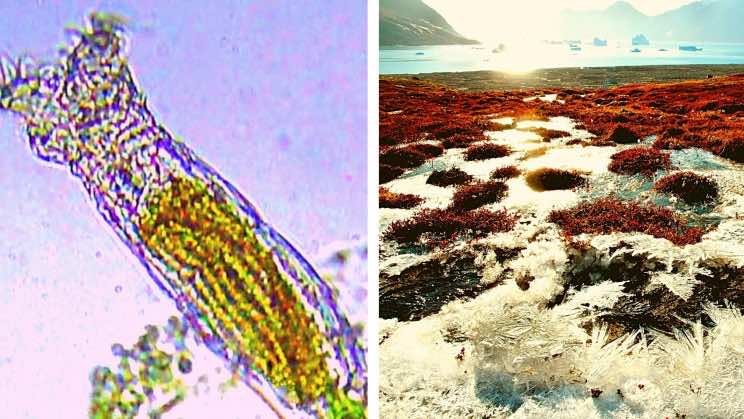Scientists have revived a collective of microscopic creatures frozen into the layers of ice in the Arctic and they are reproducing too.
These microscopic creatures have been buried into the ice for about 24,000 years and continued with the slowed biological activity known as suspended animation. Now these ever-frozen microbial critters called bdelloid rotifers are waking up from long hibernation, thanks to the efforts of a team of scientists.
The study published in Journal Current Biology revealed the waking up of rotifers from their thousands of years of sleep aided by the frozen permafrost layer, the layers of ice made possible the preservation of these multicellular Bdelloid rotifers, which are famous for their rare capabilities of bearing unbelievably low temperatures.
It won’t be wrong to say this discovery “constitutes the longest reported case of rotifer survival in a frozen state”, easily qualifying as something “of great interest not only for evolutionary biology but also for practical purposes of cryobiology and biotechnology,” wrote the scientists in a recently published study.
Rotifers lie in the freshwaters, and scientists in an attempt to test their resilience to ice collected ice cores from a location close to the Alazeya River in northeastern Siberia. “The cores were extracted from a site around 50 meters from the riverbank,” said Stas Malavin, co-author of the study and a researcher at the Soil Cryology Laboratory. “The depth at which the core used for isolation was extracted is well above the river water level, as those relic permafrost sediments, called ‘yedoma’, actually form permanently frozen hummocks that the river cuts through.”
In this experiment, Rotifers were reported to reproduce for the first time in 24,000 years, “Bdelloid rotifers are known for their ability to enter cryptobiosis in response to different adverse events like drying or freezing of the environment (and also starvation and low oxygen content),” added Malavin. “In fact, together with tardigrades, the ‘water bears’, they are among the toughest animals on the planet known to date. Thus, considering also the previous finding of nematodes, we were expecting to once find a bdelloid rotifer in our samples.” Through radiocarbon technique, scientists found that the core sample was frozen dating to 24,000 years back.
The fact that microbes cannot travel through ice means that the recovered old critters are as old as the age of the permafrost. It was a surprise for the scientists that as soon as these microbes were brought to normal living conditions, they started to reproduce. Leaving a new generation of rotifers were brought into existence from parents that are roughly 24,000 years old. The scientist’s experiments second the fact that nature preserves complex and tiny living organisms in its own natural settings, in this case, being the arctic depths.

